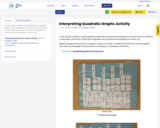
Introduction to Logarithmic Functions as Inverse of an Exponential - Mathematics Instructional Plan
- Subject:
- Mathematics
- Material Type:
- Lesson Plan
- Provider:
- VDOE
- Author:
- VDOE
- Date Added:
- 10/07/2024

Introduction to Logarithmic Functions as Inverse of an Exponential - Mathematics Instructional Plan

Surveying and Polling - Mathematics Instructional Plan

How are grocery shelf location and sugar content of cereals related? In this task, students visit two grocery stores to compare the amount of sugar in boxes of cereal that are displayed on the top shelf to the amount of sugar in boxes of cereal that are displayed on the second to the bottom shelf. They design and conduct a survey to compare their findings from two stores. In doing so, they encounter sample size, sampling technique, data collection, and
data analysis and reporting. Students compare their data in summary plots using two box and whisker plots. Students create a written report to share and relate findings to marketing decision making.

In this activity, students use the graphs of quadratic functions and equations to find the zeros or solutions, y-intercepts, and factors. There are 10 equations or functions for the students to match-up.

An introduction to logarithmic functions as the inverse of an exponential. Mathematics Instructional Plans (MIPs) help teachers align instruction with the Mathematics Standards of Learning (SOL) by providing examples of how the knowledge, skills and processes found in the SOL and curriculum framework can be presented to students in the classroom.

AFDA Quadratic Modeling Co-Teaching MIP

AFDA Rate of Change Co-Teaching MIP

Surveying and polling Mathematics Instructional Plans (MIPs) help teachers align instruction with the Mathematics Standards of Learning (SOL) by providing examples of how the knowledge, skills and processes found in the SOL and curriculum framework can be presented to students in the classroom.